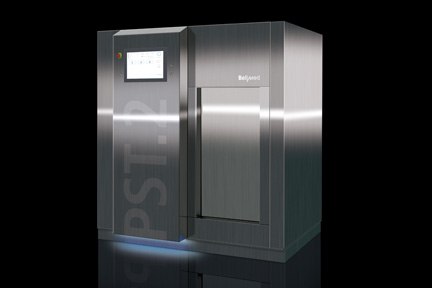What’s the difference between sterilization and disinfection?
 Sterilization and disinfection are both critical processes in the pharmaceutical industry to ensure that products are free from harmful microorganisms and contaminants. However, there are key differences between the two:
Sterilization and disinfection are both critical processes in the pharmaceutical industry to ensure that products are free from harmful microorganisms and contaminants. However, there are key differences between the two:
Sterilization:
Sterilization is the process of completely eliminating all forms of life, including bacteria, viruses, spores, and other microorganisms from a surface, object, or substance. The goal of sterilization is to achieve a “sterile” state, which means there are no viable microorganisms remaining. Sterilization is crucial for products and equipment that come into direct contact with the human body, such as medical devices, surgical instruments, and certain pharmaceutical products. Methods of sterilization in the pharmaceutical industry include:
- Steam sterilization (autoclaving): Uses high-pressure steam to kill microorganisms.
- Dry heat sterilization: Uses high temperatures to achieve sterilization.
- Gamma radiation: Utilizes ionizing radiation to kill microorganisms.
- Ethylene oxide gas sterilization: Uses gas to sterilize heat-sensitive items.
- Filtration: Passes liquids or gases through a sterilizing filter to remove microorganisms.
Disinfection:
Disinfection is the process of reducing the number of viable microorganisms on surfaces or objects to a level that is considered safe for public health. Unlike sterilization, disinfection does not eliminate all microorganisms, but it significantly reduces their numbers, making the environment or item safe for use. Disinfection is commonly used for non-living surfaces and equipment in pharmaceutical facilities, laboratories, and manufacturing areas. It is also used in cleaning pharmaceutical production equipment between batches to prevent cross-contamination. Methods of disinfection in the pharmaceutical industry include:
- Chemical disinfectants: Such as alcohol, hydrogen peroxide, quaternary ammonium compounds, and chlorine compounds.
- Ultraviolet (UV) radiation: Used to disinfect surfaces and air in certain environments.
- Dry heat or moist heat treatment: Can also be used for disinfection at lower temperatures compared to sterilization.
In summary, sterilization aims to completely eliminate all microorganisms, while disinfection reduces their numbers to safe levels but does not achieve a sterile state. Both processes are essential in the pharmaceutical industry to maintain product safety and protect public health. The choice of method depends on the specific requirements of the pharmaceutical product, equipment, or environment being treated.
Created by AI – validated by Belimed Life Science.
